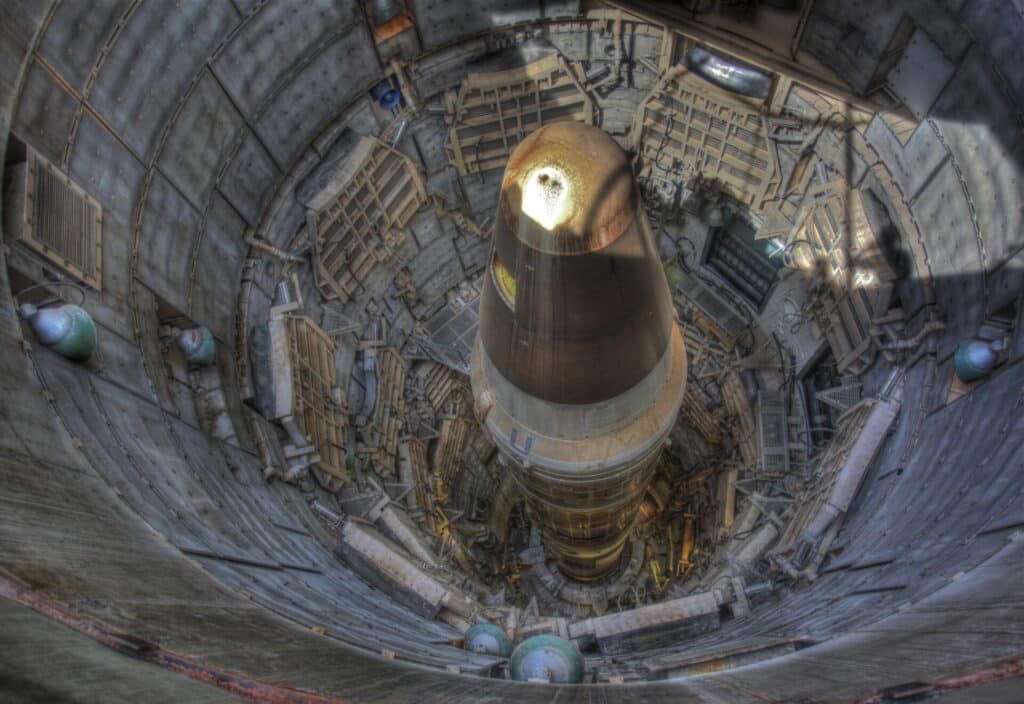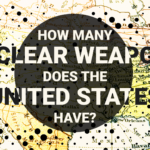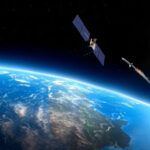Three ways the US should respond to Russia’s suspension of New START
By Steven Pifer | March 24, 2023
 A Titan II intercontinental ballistic missile (ICBM) loaded in a silo at the Titan Missile Museum in Arizona in 2012. The United States has 50 “warm” ICBM silos which could be reloaded with missiles if considered necessary. (Photo Steve Jurvetson via Flickr CC BY 2.0)
A Titan II intercontinental ballistic missile (ICBM) loaded in a silo at the Titan Missile Museum in Arizona in 2012. The United States has 50 “warm” ICBM silos which could be reloaded with missiles if considered necessary. (Photo Steve Jurvetson via Flickr CC BY 2.0)
The decision by Russian President Vladimir Putin to suspend Russia’s participation in the 2010 New Strategic Arms Reduction Treaty (New START) puts at risk the sole remaining treaty limiting US and Russian nuclear forces. Moscow is now violating a number of New START’s provisions, though Russian officials have asserted that Russia will continue to observe the treaty’s numerical limits.
Retaining New START is in the United States’ interest. The Biden administration should therefore respond calmly to Russia’s decision and continue to observe New START’s numerical limits as long as it assesses that Russia is doing so. For a limited period, the United States should keep observing the treaty’s transparency measures by providing required data and notifications. At the same time, the White House should ask the Pentagon to prepare a list of US response options should Russia break out of the treaty’s limits.
Suspension of New START. In his February 21 state-of-the-nation speech, Putin announced that Russia would suspend its participation in New START, and he signed a hastily-passed law to that effect on March 1. It may well be his personal obsession with Ukraine and anger at US support for Kyiv that drove his decision. But the suspension endangers a treaty that has served both US and Russian security interests for more than a decade. Officials in Washington termed the Russian suspension “invalid,” noting correctly that New START makes no provision for suspension.
Putin’s decision should not have come as a surprise; New START already was in trouble. In summer 2022, Russian officials refused to facilitate treaty-mandated inspections. Then, in November, they declined to attend a previously-agreed meeting of the Bilateral Consultative Commission, which the treaty says should meet twice a year. Finally, earlier this March, Russia committed yet another violation, ceasing to provide notifications of changes of its strategic forces required by the treaty.
Ironically though, Putin’s decision has prevented the implementation of an inspection measure that both US and Russian officials had worked out to address Russian concerns about the conversion of ballistic missile launch tubes on US submarines so that they could not launch their missiles. Putin’s decision can’t have been made in good faith.
The day following Putin’s announcement, Russian Deputy Foreign Minister Sergey Ryabkov said Russia would continue to abide by New START’s numerical constraints. Ryabkov added that Russia also would continue to provide notifications of launches of strategic ballistic missiles—intercontinental ballistic missiles (ICBMs) and submarine-launched ballistic missiles (SLBMs). (The launch notifications are required by a 1988 US-Soviet agreement as well as by New START.)
Monitoring the treaty’s limits. New START provides for three numerical limits. At any time, each side may have no more than 700 deployed ICBMs, SLBMs, and heavy bombers; no more than 800 deployed and non-deployed ICBM/SLBM launchers and heavy bombers combined; and no more than 1,550 deployed strategic warheads (counted as the number of warheads on deployed strategic ballistic missiles plus one warhead for each deployed heavy bomber).
New START’s data exchanges, notifications, and on-site inspections help both sides to better understand the other’s strategic forces and monitor compliance with the treaty’s numerical limits. Russia has halted these. Despite this decision, the US State Department assessed that, as of the end of 2022, Russia “likely” was in compliance with the limit of 1,550 deployed strategic warheads. (The September 2022 data exchange put the number of Russian deployed strategic warheads at 1,549.) The State Department report did not note concern about Russian compliance with the 700 and 800 limits (The September 2022 data exchange showed Russian strategic forces well below those limits—at 540 and 759, respectively.).
Using national technical means of verification (e.g., imagery satellites), the United States should be able to accurately monitor the Russian military’s compliance with New START’s 800 limit and probably the 700 limit as well. However, absent notifications and, in particular, on-site inspections, the confidence of the United States in its ability to monitor Russia’s compliance with the 1,550 limit on deployed strategic warheads will decline with time. And that is the most crucial limit.
Moscow’s action has created a crisis for New START, though it is not yet a national security crisis for the United States. In 2012, a Pentagon report coordinated with the Director of National Intelligence concluded that Russia “would not be able to achieve a militarily significant advantage by any plausible expansion of its strategic nuclear forces, even in a cheating or breakout scenario under the New START Treaty.” Although this report is 11 years old and China has begun expanding its nuclear arsenal, it still suggests that Washington has time to decide how to respond to Russia’s suspension.
How Washington should respond. Retaining New START, with both sides in full compliance, serves US interests. Putin’s myopic focus on Ukraine may well have doomed the treaty, but Washington should still seek to preserve it. Specifically, it should take three steps.
First, the Biden administration should state that the United States will continue to observe New START’s numerical limits for as long as it assesses that Russia has not exceeded those limits. This has an antecedent: From 1981 to 1986, the Reagan administration observed a policy of not undercutting the unratified SALT II Treaty so long as the Soviet Union did not do so.
This would secure the high ground for Washington and would be welcomed by allies who continue to see value in constraints on nuclear forces. At the same time, it would also leave the door open for Russia to change course and return to compliance, while putting down a marker regarding possible US action should Russia exceed the New START limits.
Second, the administration should declare that, for a limited period—say six to nine months or until the end of 2023—the United States will continue to provide the data and notifications required by New START. However, if Russia has not returned to full compliance by the end of that period, the United States would cease the unilateral provision of data and notifications. In that case, should US officials conclude that sharing some information with Moscow might help reduce the risk of strategic miscalculation, it could continue to provide such information but outside New START.
Third, while the 2012 Pentagon study suggested that Russia could exceed New START limits without jeopardizing US security, the White House should task the Pentagon with preparing a report on possible response options should Russian strategic forces grow beyond those limits. Those options could include deploying more US strategic warheads by uploading US strategic ballistic missiles (most of which carry fewer warheads than their capacity) and deploying ICBMs to 50 silos that are empty but maintained in “warm” status (i.e., ready to receive a nuclear-capable missile). As it prepares to build and deploy the Columbia-class ballistic missile submarine, the Sentinel ICBM, and the B-21 bomber, the Pentagon report could also weigh whether the currently planned numbers for those systems suffice.
The Biden administration should make the report public. Whether or not Washington would choose to exercise those response options—and, if it did, how far it might increase US strategic force numbers—is a separate question that would depend in part on what Russia did. However, issuing a public report could usefully remind the Russian government, particularly senior Russian military leaders, that starting a nuclear arms race would not give Moscow any evident strategic advantage and could leave Russia in a worse position. Making such a report public would also insulate the administration from the almost certain complaints of arms control critics about the first two steps being too soft. Some of them have already argued that the United States should leave New START even were Russia in full compliance.
It is difficult to be optimistic about New START’s future. Still, preserving the treaty—which by its terms would remain in force until 2026—would give Washington time to figure what, if anything, should follow New START in a more complex international security environment marked by a hostile Russia and a China apparently intent on a major expansion of its nuclear capability. These steps would position the United States to maintain New START while having measures ready should Putin’s fixation on Ukraine lead to the treaty’s complete demise.
Together, we make the world safer.
The Bulletin elevates expert voices above the noise. But as an independent nonprofit organization, our operations depend on the support of readers like you. Help us continue to deliver quality journalism that holds leaders accountable. Your support of our work at any level is important. In return, we promise our coverage will be understandable, influential, vigilant, solution-oriented, and fair-minded. Together we can make a difference.
















Whoever speaks about increasing the number of strategic warheads has no interest in the continuation of human life on this planet. Every effort should go in convincing all the involved governments (including US) that negotiations should start as soon as possible. What did the author of the present article do in that direction?
Putin thought Ukraine would take a week or two. US massive 200 billion in weapons for Ukraine has caused 60,000 plus Russian deaths in a war now in it’s 2nd year
That’s why Putin pulled out of the treaty. He called US “the same as an enemy combatant” in his state of the Union speech this year.
And he has signed an alliance with Iran and China. It’s the new Axis.
The US has worked very hard over the past decade to turn itself into an “enemy combatant” of Russia, despite Russia’s strenuous efforts to secure good relations with the US. The record speaks for itself.
At least we should be thankful that the ambassador calls for upholding START. He appears, however, not to have listened to Putin’s speech announcing the suspension because that part came at the end of a long recitation of the West’s broken promises from the “not one inch eastward” to the shredding of the Minsk accords. The problem of Russia’s continued adherence to agreements while the West freely discards them is that it conveys an impression of weakness, with obvious implications for deterrence. While the ambassador has the luxury of ignoring this problem, Putin does not.